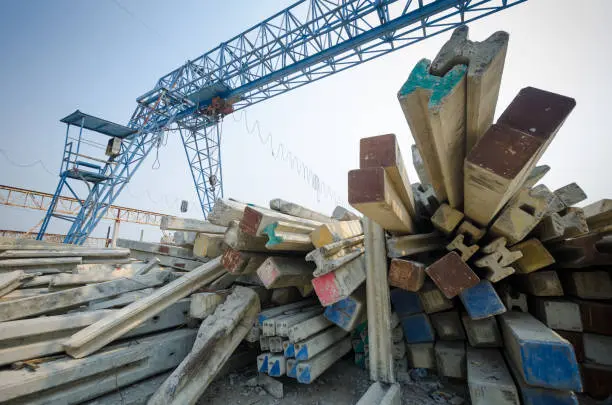Global infrastructure development is booming, driving historic demand for raw materials. From smart cities to renewable energy, these projects are reshaping supply chains and creating both challenges and opportunities for the construction sector. Understanding this dynamic is crucial as nations invest trillions in modernization.
Massive Infrastructure Projects Driving Global Demand
The Belt and Road Initiative’s Material Appetite
China’s Belt and Road Initiative represents the largest infrastructure development program in human history. Spanning over 60 countries, this $1 trillion project connects Asia, Europe, and Africa through railways, highways, ports, and energy facilities. The material requirements are staggering—millions of tons of steel, concrete, and specialized construction materials flow across continents to support these projects.
The initiative has fundamentally altered global supply chains. Countries that previously had minimal construction material exports now find themselves major suppliers to BRI projects. This shift has created new trade relationships and dependencies that extend far beyond traditional construction markets.
Regional Infrastructure Transformation
North America’s infrastructure modernization focuses heavily on replacing aging systems. The U.S. Infrastructure Investment and Jobs Act allocates $1.2 trillion over five years, emphasizing roads, bridges, broadband, and clean energy infrastructure. This domestic focus creates sustained demand for locally sourced materials.
Europe pursues the European Green Deal, investing €1 trillion in sustainable infrastructure by 2030. Wind farms, solar installations, and electric vehicle charging networks require specialized materials, from rare earth elements for turbines to lithium for battery storage systems.
Africa’s infrastructure gap presents enormous opportunities. The African Development Bank estimates the continent needs $130-170 billion annually for infrastructure development. Projects range from transportation networks connecting landlocked regions to power generation facilities serving growing urban populations.
Essential Raw Materials Powering Construction
Steel: The Backbone of Modern Infrastructure
Steel remains the most critical construction material globally. Infrastructure projects consume approximately 50% of global steel production, with demand patterns shifting based on project types and regional preferences. Bridge construction, high-rise buildings, and industrial facilities require different steel grades and specifications.
Regional steel supply networks have become increasingly important. Steel supply like that in Utah demonstrates how localized production can serve regional infrastructure needs while reducing transportation costs and environmental impact. These regional hubs provide construction projects with reliable access to materials while supporting local economies.
Concrete and Cement: Foundation Materials
Concrete consumption correlates directly with infrastructure development levels. Emerging economies often see concrete usage increase by 5-10% annually during peak development periods. China’s urbanization process consumed more concrete in three years (2011-2013) than the United States used throughout the entire 20th century.
Cement production faces unique challenges. The industry generates approximately 8% of global CO2 emissions, making it a target for environmental regulations. Alternative cement formulations and production methods are becoming crucial for meeting both demand and sustainability requirements.
Aggregates and Specialized Materials
Sand and gravel aggregates represent the highest-volume raw materials in construction. Infrastructure projects require specific aggregate properties—highway construction needs different specifications than airport runways or port facilities.
Asphalt demand fluctuates with road construction cycles. Advanced highway systems and smart road technologies require specialized asphalt formulations with embedded sensors and enhanced durability properties.
Supply Chain Vulnerabilities and Risks
Geopolitical Disruption Patterns
Raw material supply chains face increasing geopolitical risks. Trade disputes, sanctions, and border conflicts can instantly disrupt material flows. The Russia-Ukraine conflict demonstrated how quickly infrastructure projects worldwide can face material shortages when key suppliers become unavailable.
Strategic material stockpiling has become common practice. Countries and companies now maintain larger inventory buffers to protect against supply disruptions, though this approach increases carrying costs and storage requirements.
Environmental and Regulatory Challenges
Mining and extraction activities face stricter environmental oversight. New regulations limit extraction methods, require environmental impact assessments, and mandate restoration activities. These requirements increase material costs and can create supply bottlenecks.
Transportation infrastructure for raw materials also faces environmental scrutiny. Rail and shipping networks must balance efficiency with environmental impact, leading to route optimization and cleaner transportation technologies.
Price Volatility and Market Dynamics
Raw material prices experience significant volatility driven by supply-demand imbalances, speculation, and economic cycles. Infrastructure planners must account for price fluctuations when designing long-term projects, often using hedging strategies or flexible sourcing arrangements.
Market consolidation in key materials creates additional risks. When few suppliers control critical materials, supply disruptions can have cascading effects across multiple infrastructure projects simultaneously.
Sustainable Material Sourcing and Innovation
Circular Economy Approaches
Construction waste recycling has evolved from cost-saving measure to strategic necessity. Demolished concrete becomes aggregate for new projects, while steel recycling reduces primary material demands. Advanced sorting and processing technologies enable higher-quality recycled materials suitable for infrastructure applications.
Regional material loops reduce transportation emissions while supporting local economies. Cities increasingly require infrastructure projects to incorporate minimum percentages of recycled materials, creating steady demand for processed construction waste.
Alternative Material Development
Bio-based construction materials offer promising alternatives to traditional options. Engineered wood products can replace steel in certain applications, while hemp-based concrete alternatives provide insulation and structural properties with lower environmental impact.
Geopolymer concrete uses industrial waste products instead of traditional cement, reducing CO2 emissions while maintaining structural performance. These innovations require extensive testing and certification processes before widespread adoption in infrastructure projects.
Technology Reshaping Material Usage
Digital Design and Optimization
Building Information Modeling (BIM) and advanced design software optimize material usage during project planning. These tools identify material waste opportunities, suggest alternative specifications, and integrate supply chain logistics into design decisions.
Prefabrication and modular construction techniques reduce on-site material waste while improving quality control. Factory-controlled environments enable precise material usage and quality assurance impossible with traditional construction methods.
Smart Material Technologies
Self-healing concrete incorporates bacteria or chemical agents that repair minor cracks automatically, extending infrastructure lifespan and reducing maintenance material requirements. While still developing, these technologies show promise for reducing long-term material consumption.
Advanced steel alloys provide superior strength-to-weight ratios, enabling lighter structures with equal performance. These innovations reduce material volumes while maintaining or improving structural integrity.
Automation and Construction Robotics
3D printing technology enables complex structures with minimal material waste. Large-scale construction printers can create building components using locally sourced materials, reducing transportation requirements and enabling customized designs.
Robotic construction systems optimize material placement and reduce human error. These technologies improve construction quality while minimizing material waste through precise application methods.
Future Infrastructure and Material Trends
Climate-Resilient Infrastructure Demands
Climate change adaptation requires infrastructure designed for extreme weather events. Flood barriers, reinforced foundations, and resilient transportation networks need specialized materials capable of withstanding harsh environmental conditions.
Green infrastructure solutions integrate natural systems with built environments. These projects require different material profiles, emphasizing permeable surfaces, native vegetation support systems, and integrated water management components.
Urban Density and Material Efficiency
Increasing urban density drives demand for high-performance materials. Tall buildings, underground transportation networks, and compact utility systems require materials with exceptional strength, durability, and space efficiency.
Smart city technologies embed sensors and communication systems throughout infrastructure. These installations require specialized materials that accommodate electronic components while maintaining structural performance.
Emerging Market Infrastructure Acceleration
Developing economies represent the fastest-growing infrastructure markets. Rising middle classes and urbanization drive massive construction programs requiring traditional materials at unprecedented scales.
Technology transfer enables emerging markets to adopt advanced construction methods and materials more rapidly than historical development patterns suggested. This acceleration compresses material demand cycles and creates supply chain pressure points.
Conclusion
The infrastructure boom creates opportunities and challenges for raw material markets. Success lies in sustainable practices, diversified sourcing, eco-friendly materials, and technology integration to boost efficiency and competitiveness. Responsible companies can gain a strong advantage.
Also Read-



